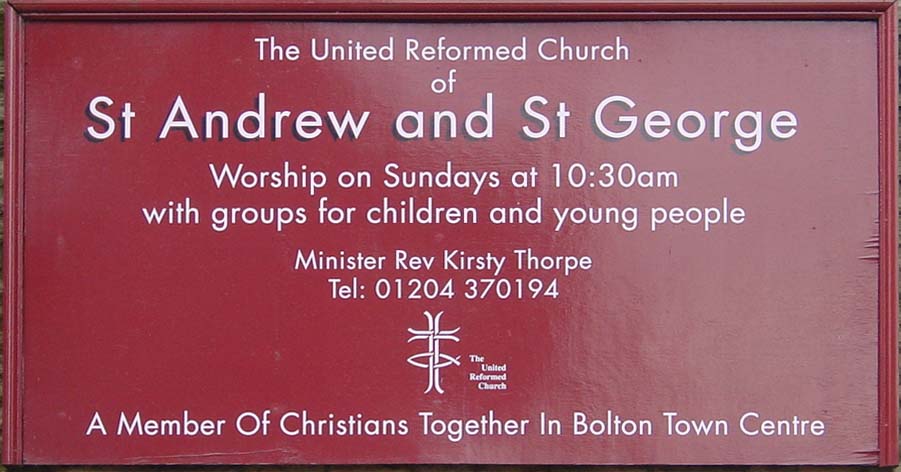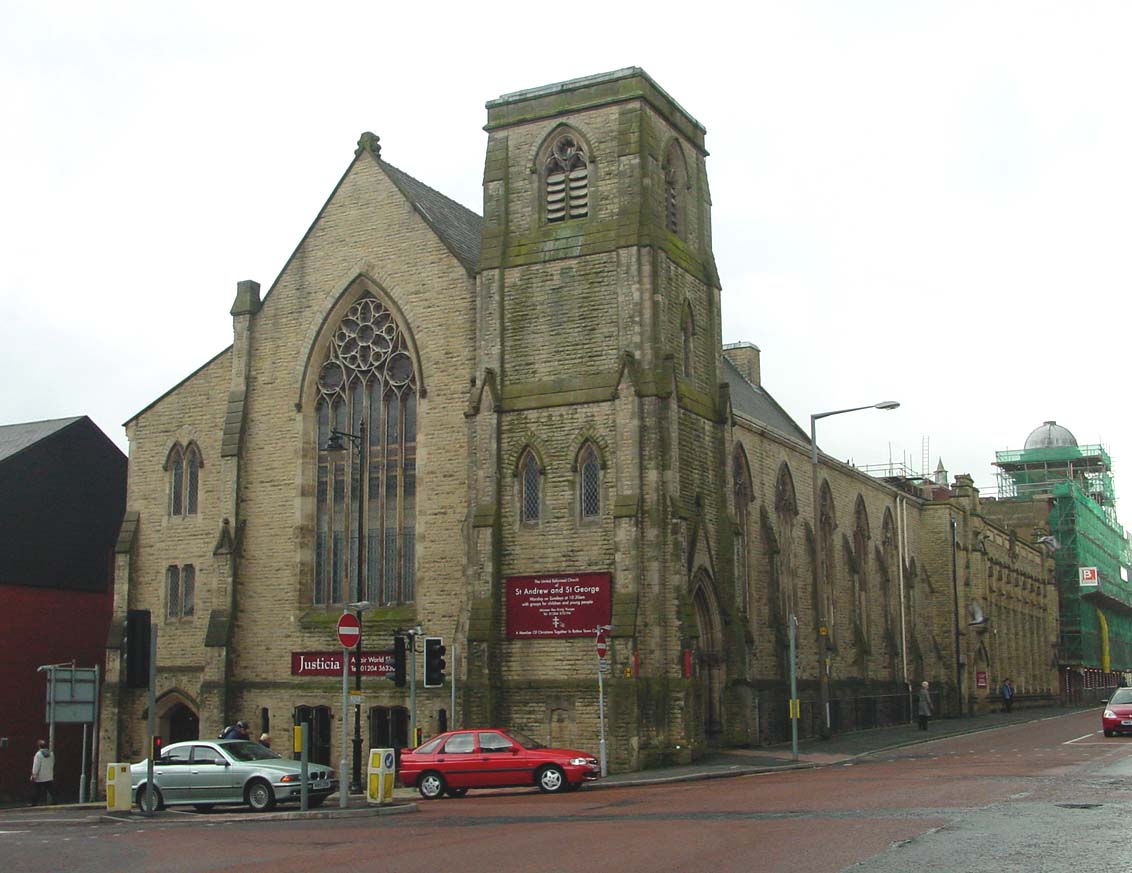 |
St Andrew and St George, Little Bolton |
 |
 |
St Andrew and St George, Little Bolton |
 |
 | |
 | |
From The Bolton Journal and Guardian, Friday, May 17 1935, reproduced here by the kind permission of the Bolton News.
ST. GEORGE’S-RD Congregational Church has a long and honourable history. The church (using the term to apply to the body of worshippers rather than the building) can claim to be the first independent dissenting congregation ever formed in Bolton, dating from April 3rd, 1752.
In that year, 107 members of the Methodist Society formed by the Rev. J. Bennett became dissatisfied with the terms of the Trust Deed of the Methodist Chapel they had erected in Hotel-st., and withdrawing from the Wesleyan body, formed themselves into a new “independent” society.
In the following year Mr. Bennett obtained land in Duke’s Alley for building, and soon afterwards his Society received an addition to their numbers through a secession from the Presbyterian congregation meeting in Bank-st. Chapel.
The first ordained ministers who preached to the congregation assembling at Duke’s Alley were the helpers, and the Rev. George Whitfield, who were in the habit of visiting Bolton.
The first settled pastor was the Rev. James Wraith, who began his work in 1772. He had several successors up to 1852 in which year, the Rev. W.H. Davison was ordained.
During the first years of his ministry the number of Communicants increased from 80 to 250, and for some time prior to 1862 there were no vacant sittings for persons wishing to join the congregation.
Mr. Davison made an earnest appeal to members of his own church to play their part in remedying the shortage of accommodation in places of worship, which was common to the town. The congregation set to work with a will to obtain contributions.
A large sum was raised, and land was obtained at the junction of Knowlesley-st. and St. George’s-rd. On Good Friday (April 18th) 1862, the bi-centenary of the ejection of the two thousand ministers, the corner stone of the new building was laid in the presence of a vast concourse of spectators, by Mr. Thomas Barnes, M.P.
The company assembled in Duke’s Alley Chapel and marched in procession to the site. In the course of ceremony Mr. James Lever deposited in the cavity of the stone a bottle containing, amongst other articles, a statement which explained that the building was intended “for the use of the church and congreation of the Independent, or Congregational order aforetime meeting in Duke’s Alley Chapel, under the pastorate of Rev. W.H. Davison, who desired by its erection to provide additional accommodation for the public worship of Almighty God, which had hitherto been greatly deficient in the rapidly increasing town, and to secure the formation of a third church and congregation of the denomination to which they were attached.” Twelve months afterwards, on April 3rd, 1863, the new church was opened.
The structure, the architects of which were Messrs. Olive and Lamb, Newcastle-upon-Tyne, is entirely of stone. It has a handsome and commanding appearance, for the site is very suitable for an attractive building, and the style of architecture is Gothic.
On the basement floors were large school-room, class-rooms, etc., and above these is the Church with vestries behind. The church will seat 1,200 people. The doorways in the tower and porch are richly carved, and there is a fine seven-light window with elaborate tracery.
The total cost was nearly £9,000 and a debt of over £2,200 remained after the opening services. A portion of this was met by yearly subscriptions, until it was resolved to wipe off the remainder – upwards of £1,600. Towards this, subscriptions of upwards of £200 had been promised, and in response to an appeal for “a golden collection,” augmented by a few subscriptions from personal friends of the pastor, the amount placed in the boxes amounted to nearly £1,400.
In 1870 when an organ chamber was added them fine octagonal pulpit of Caen stone, decorated with various marbles, was also erected.
| Bolton Home & Contents | ©Lancashire OnLine Parish Clerks | Lancashire Home |